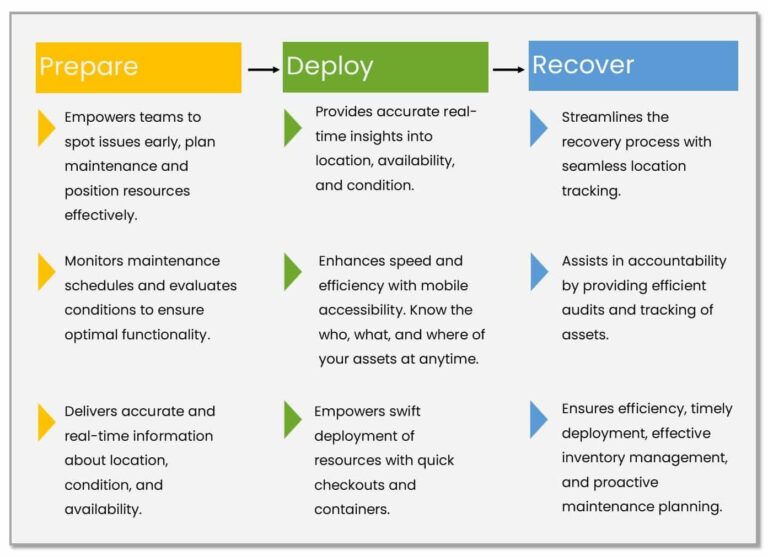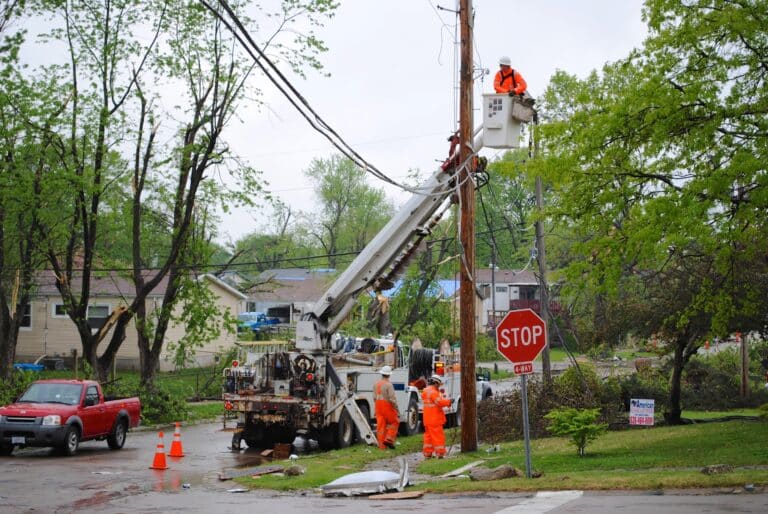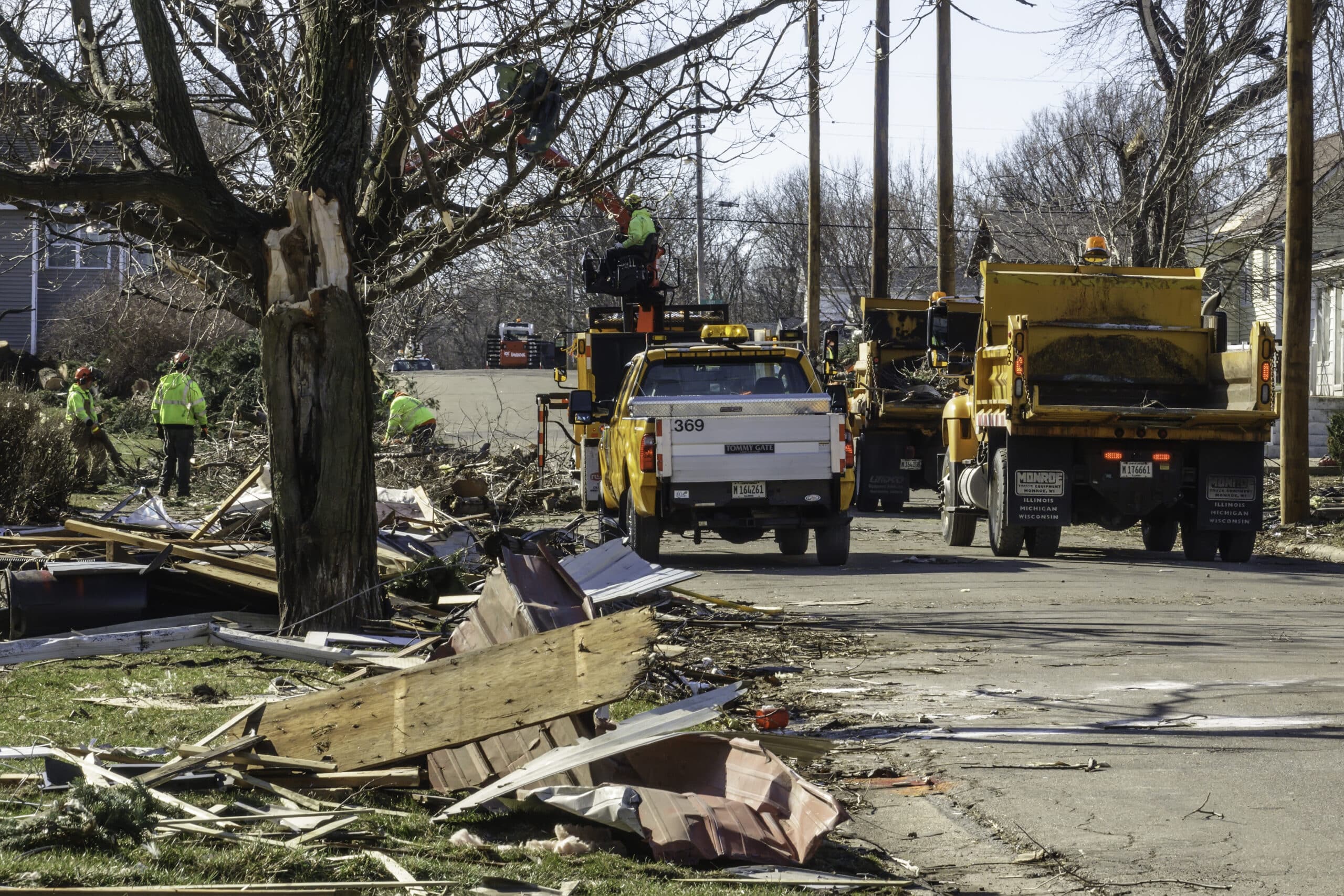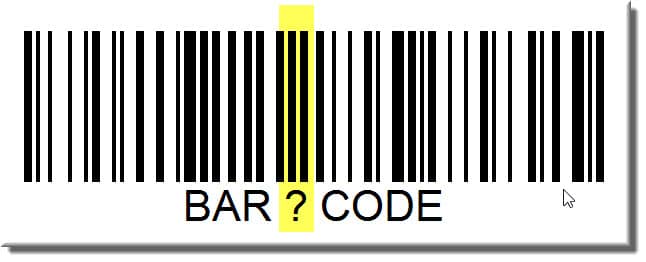In the dynamic realm of disaster response, emergency asset tracking stands out as a vital element. Asset tracking in emergency management is instrumental in bridging the gap between the initial chaos and eventual recovery when facing nature’s challenges, whether it be hurricanes, earthquakes, floods, or wildfires. It’s not just about being brave; it’s about different industries working together to fix, clean, and restore things. They don’t just save lives; they also help rebuild communities and bring back important services so things can go back to normal quickly.
When it comes to dealing with crises, inventory and asset tracking assumes the role of a silent yet indispensable partner. Serving as the backbone of preparedness, efficiency, and accountability in emergency management, it employs a systematic approach to monitor and manage the physical tools, equipment, and supplies essential for rapid response efforts. As we deal with new challenges from modern emergencies, the importance of keeping track of your assets becomes increasingly apparent.
This blog post delves into the critical role of asset tracking in emergency management, exploring how it systematically transforms chaos into order. Join us on this exploration as we unveil the key components empowering emergency responders to efficiently address and rectify the damage inflicted by Mother Nature.
Understanding Asset Tracking
Asset tracking acts as a reliable support system, ensuring smooth operations in times of crises. Think of it like a tech-savvy companion with barcode magic, diligently keeping an eye on equipment, supplies, and tools from their inception to deployment. This real-time tracking routine guarantees that our heroes—whether they’re disaster cleanup crews, utility experts, or healthcare professionals—stay consistently equipped, prepared, and efficient.
Utilizing barcode technology, each asset gets a unique identifier, making real-time tracking of its location, status, and maintenance history a breeze. This organized method establishes accountability, efficiency, and readiness by providing accurate and up-to-date information, especially crucial during crises. Industries in service, utility, and healthcare have recognized the game-changing potential of asset tracking, using it to boost their emergency response capabilities.
Natural Disasters and Asset Tracking in Emergency Management
Natural disasters present challenges to emergency management, highlighting the crucial role of asset tracking in preparedness and response. Quick restoration post-disasters rely on efficient inventory management. Asset tracking proves indispensable in Early Preparedness, Rapid Deployment, and Recovery – becoming a linchpin in emergency management.

Early Preparedness, Rapid Deployment, and Recovery
During Early Preparedness, asset tracking provides teams with crucial up-to-date information about the location, condition, and availability of tools, supplies, and equipment. This proactive approach aids in spotting issues early, planning maintenance, and strategically positioning resources for emergencies. Efficient inventory management ensures preparedness, allowing different sites to have containers ready with necessary supplies. Additionally, it keeps a vigilant eye on maintenance schedules, expiration dates, and asset conditions to ensure optimal functionality when needed.
As emergencies unfold, Rapid Deployment becomes crucial. Asset tracking, with its real-time capabilities, significantly influences quick decision-making. Knowing the precise location, availability, and condition of key resources maximizes their utilization during natural disasters. Industries can prepare supplies in advance for swift checkouts, and real-time tracking facilitates seamless inventory management, enabling the rapid replacement of equipment to stay prepared for any challenge.
In the Recovery phase, asset tracking’s role extends to assessing damage, recovering assets, and efficient rebuilding. The seamless tracking of locations and effective audits ensure accountability, contributing to a smoother recovery process. Asset tracking supports recovery by facilitating resource allocation, timely deployment of assets, effective inventory management, proactive maintenance planning, loss prevention, financial accountability, enhanced communication, and optimized workflows. In essence, it acts as a comprehensive support system, enhancing the overall resilience and responsiveness of emergency management efforts.
Comprehensive Insights into Assets and Real-world Applications in Emergency Management
Various assets and equipment are indispensable in emergency response and recovery. From specialized tools and equipment for cleanup and remediation, utility equipment for restoring essential services, to field service kits filled with tools and emergency medical supplies, tracking and maintaining these assets are essential for an effective emergency management strategy. This list of FEMA approved supplies gives a bit more of a complex look into just some of the assets that can be tracked.

Asset Tracking in Real-World Emergency Scenarios
In the aftermath of a natural disaster, such as a hurricane or severe storm, utility companies play a crucial role in rapidly restoring essential services for affected communities. The widespread damage to the power grid, telecommunication infrastructure, and water supply systems disrupts crucial services for homes, businesses, and critical facilities. To address these challenges, utility companies promptly mobilize their trained crews to assess and repair electrical and water infrastructure, working tirelessly to reinstate water, electricity, and communication networks promptly. This swift and collaborative response, working closely with emergency responders, significantly contributes to the overall recovery and resilience of communities impacted by the natural disaster.
Following such an event, restoration companies become pivotal in facilitating community recovery. For instance, after a severe flood, these companies deploy specialized teams armed with tools to address water damage by extracting water, evaluating structural damage, and initiating drying processes. In the case of a wildfire, restoration companies specializing in smoke and fire damage rapidly assess affected structures, clear debris, and implement procedures to salvage and rebuild damaged properties. Their expertise in handling fire-related challenges proves crucial for communities aiming to recover.
Various service companies also prove indispensable during natural disasters. Take, for example, tree service companies, which promptly clear fallen trees and branches, aiding emergency responders and facilitating access to affected areas. Similarly, roofing service companies address damage caused by high winds or hail, assessing and repairing roofs to prevent further structural issues and water infiltration. Timely interventions from these service companies play a pivotal role in mitigating additional property damage, contributing significantly to the overall recovery process for homeowners and businesses.
In challenging times, a software to keep track of your supplies is crucial for efficient response efforts. It monitors essential tools in real-time, helping workers quickly find and use equipment. Maintenance tracking ensures tools stay in good shape, with scheduled check-ups for optimal performance. Integrated into emergency response workflows, tracking your resources brings order and readiness, empowering workers to respond effectively, boosting emergency management strength and speed.
Key Takeaways
Emergency asset tracking is pivotal in quickly responding to natural disasters, ensuring a seamless transition from chaos to recovery. Collaborative efforts of various industries go beyond saving lives to rebuilding communities.
As the backbone of preparedness and efficiency, asset tracking systematically transforms chaos into order. Real-time tracking, facilitated by barcode technology, equips disaster response teams for optimal performance.
From Early Preparedness to Rapid Deployment and Recovery, asset tracking is a linchpin, optimizing resource coordination and guaranteeing efficient recovery efforts. Its transformative potential is evident across industries.
In essence, asset tracking is more than a tool; it’s a strategic ally, enhancing the resilience and responsiveness of emergency management. It reinforces preparedness in the face of adversity, ensuring every resource is accounted for and contributing significantly to effective response efforts.

At the forefront of emergency management, Panatracker stands as a powerful ally, simplifying and streamlining your response efforts with cutting-edge technology. Explore how our easy-to-use software can elevate your emergency management capabilities, offering the next level of efficiency, resilience, and preparedness – because in the face of chaos, every tool counts.
With Panatrack, organizations involved in disaster response can streamline operations, reduce response times, and enhance accountability through flexible tracking of assets and inventory. Our solutions are designed to support a wide range of tracking needs, from tools and equipment to medical supplies and IT assets, making Panatrack indispensable for organizations looking to optimize their urgent response capabilities.
Learn more about how Panatracker’s Tool Tracking Software can benefit your emergency management team contact us to set up a call where we can walk you through all we have to offer.






